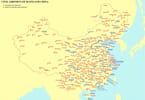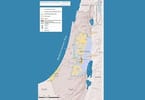Indonesia is one of the most loved Asean destinations by Italian tourists and has been for many years. The presence of flag air carrier Garuda Indonesia Airlines has contributed to maintaining its image as compared to 15 years ago when the carrier ceased operation.
The rampant promotion of minor Asean destinations (in terms of territory) boosted the number of traveler bound for Indonesia.
The new image campaign of the destination in Italy stimulated the approach of the Ambassador who recently took office in Rome, HE Mrs. Esti Andayani. eTN Ambassador Mario Masciullo sat down with Mrs. Andayani to find out what the plans are for Indonesia tourism in Italy.
eTurboNews: How is the tourism trend in general and specifically from Italy to Indonesia?
HE Mrs. Esti Andayani: Indonesia has been well known for a wide spectrum of tourist destinations, both in terms of nature and culture.
The tourism sector is one of the main contributors for Indonesia’s rapid economic growth. According to 2015 figures, it constitutes 10% of GDP, ranked 4 in foreign exchange contributor, and provides 9.8 million jobs (8.4%).
The government and people of Indonesia are working progressively to develop the tourism sector. Foreign tourism contribution in 2015 has been 11.5 million, a slight below the target 12 million foreign tourists on 2016, and 15 million on 2017. We set a target of 20 million foreign tourists in 2019
To boost the number of tourists, the Indonesian Government has waived visa requirements for short touristic visits (30 days) for many countries, including Italy.
Europeans have been traditionally linked to Indonesia’s tourism destinations for a long time. According to the Indonesian Statistics Bureau (BPS), Europe contributes 15% of foreign tourists whose main sources originate from the UK, France, Germany, and the Netherlands, followed by Italy.
The number of Italian tourists to Indonesia has also grown significantly in recent years, from 67,892 visitors in 2015 to 79,424 in 2016, about a 17% increase, while the average stay in the country was about 14 days (2015).
The most visited places are the islands of Bali and Lombok, the archaeological and natural sites of Java, with reference to the art cities of Yogyakarta and Solo, the sacred complexes of Borobudur and Prambanan, and the volcanic areas of Mount Bromo and Ijen Plateau. Other demanded destinations include areas dedicated to marine tourism and diving in the Natural Park of Flores-Komodo, and in the archipelagos of Sulawesi, Raja Ampat, and Moluccas.
eTurboNews: Bali seems to be saturated with tourists originating from ASEAN countries, Japan, and South Korea. Is this correct?
HE Mrs. Esti Andayani: Bali is still the main gate for foreign tourists to Indonesia in 2016 with a 43% market share. At present, the largest number of tourists visiting Bali come from Australia (1.14 million), China (990,000), and Japan (235,000), followed by the UK, India, and Malaysia. South Korea instead has registered a slight drop, according to the 2016 data.
The highest increases were registered by India (57.61%), China (43.39%), and the UK (32.01%), followed by Russia (29.27%) and Germany (27.87%).
Regarding Mount Agung Volcano, so far Bali is still relatively safe for various tourism activities, since the Agung volcano is in the eastern part of the Bali island, and the danger zone is within a radius of 9-12 km. The famous tourist areas like Ubud is 50 km away from the volcano, while Kuta beach, Tanah Lot, and the airport are located more than 70 km away.
The international airports in Bali and Lombok are operating normally despite sometimes there are the plumes of ash and a code orange aviation warning. There were sometimes a series of minor eruptions after the volcano came to life again and sent out a plume of ash. The volcano’s rumblings have pounded Bali’s lucrative tourism industry and its wider economy, with expected losses amounting up to US$665 million in visitor-related revenue if Mt. Agung’s activity continues.
eTurboNews: Is the Tourism Ministry adopting some strategies to encourage ASEAN tourism to visit more destinations beyond Bali?
HE Mrs. Esti Andayani: The Indonesian Ministry of Tourism aims to position Indonesia as “a wish list country” for world travelers, not specifically for ASEAN tourists. The government is planning to make tourism the core of the nation’s economy after projecting the sector to be the main contributor to foreign reserves.
In the last decade, the Indonesian Government has been developing many destinations beyond Bali as well as exploring numerous touristic attractions and activities. In line with the policy of President Joko Widodo, the maritime sector also became an essential agenda of economic development for tourism in Indonesia. Since 2015, the Ministry of Tourism is intensively focusing on promoting Indonesian marine and cruise tourism attractions. This is inspired by the Indonesian archipelago, having over 17,000 islands and coastal areas that offer diverse experiences and tourism activities, both at sea and at the resorts.
eTurboNews: Which Indonesian regions are lined up for development, and what is being done to inform the local population of the projects; is the local infrastructure and transport system suitable to reach the new area?
HE Mrs. Esti Andayani: The Ministry of Tourism is working on preparing 10 new priority destinations – the so-called “10 new Bali” – namely: Lake Toba – North Sumatra, Tanjung Kelayang – Bangka Belitung, Tanjung Lesung – West Java, Thousand Islands – Jakarta, Borobudur – Central Java, Bromo Tengger Semeru – East Java, Mandalika – West Nusa Tenggara, Labuan Bajo – East Nusa Tenggara, Wakatobi – South East Sulawesi, and Morotai – North Maluku.
The government has also elaborated a strategy to promote the selected destinations through a Priority Program which has three main priorities: Digital tourism (E-tourism), Homestay, and Air Accessibility/connectivity.
The Indonesian Government is working to the utmost to attract investments from abroad to build new infrastructure and transportation systems to support the development of the country in general, and of course in line with the development of the new tourist destinations. It is estimated this will entail a total investment budget of US$20 billion (US$10 billion through public investment and US$10 billion through private investment).
eTurboNews: Regarding plans to improve the image of Indonesia in Italy, after advertising through the public transport that has been seen lately, is there a plan to further stimulate the Italian traveler to visit Indonesia?
HE Mrs. Esti Andayani: As you have already mentioned, lately the promotion of Indonesia as a tourist destination to catch the attention of potential Italian tourists is getting more frequent. This year, we have been advertising on public transport in the main Italian cities such as Milan and Rome. We also advertised a combined promotion of trade and tourism in Napoli’s buses and Milan’s tramways.
We will double our efforts to increase the collaboration with the main tour operators specialized in Indonesia as a tourist destination and our presence in the most important travel trade exhibitions. In addition, we will organize our cultural promotion in collaboration with local governments and associations in various regions. As the Northern part of Italy has been relatively covered with exposures on Indonesia, I would like to emphasize the future promotional activities to the southern part of Italy.
eTurboNews: Are there any plans to restore Garuda Indonesia air links between Italy and Indonesia, perhaps in collaboration with Alitalia?
HE Mrs. Esti Andayani: At present, Garuda in Europe flies only to two destinations: Amsterdam in the Netherlands and London in the UK. In fact, the largest number of tourists from Europe to Indonesia come from the UK and the Netherlands, while as far as Amsterdam is concerned, its airport, Schiphol, is considered one the most important air hubs.
There is a growing need to re-open direct flights between Italy and Indonesia to facilitate access into Indonesia for Italian tourists and vice versa, and we are trying our best to make this happen in the future.
IHE Ị GA-Ewepụ na edemede a:
- The most visited places are the islands of Bali and Lombok, the archaeological and natural sites of Java, with reference to the art cities of Yogyakarta and Solo, the sacred complexes of Borobudur and Prambanan, and the volcanic areas of Mount Bromo and Ijen Plateau.
- Regarding Mount Agung Volcano, so far Bali is still relatively safe for various tourism activities, since the Agung volcano is in the eastern part of the Bali island, and the danger zone is within a radius of 9-12 km.
- The number of Italian tourists to Indonesia has also grown significantly in recent years, from 67,892 visitors in 2015 to 79,424 in 2016, about a 17% increase, while the average stay in the country was about 14 days (2015).























